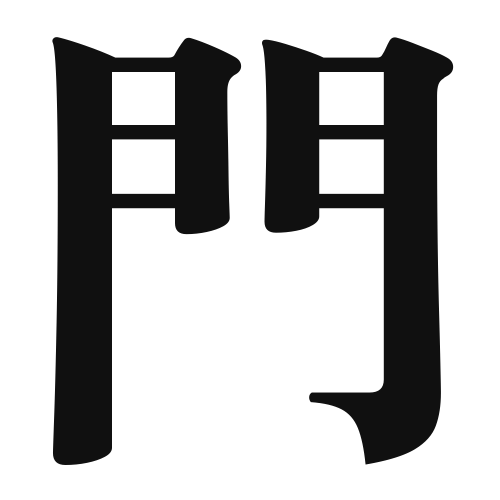1. Overview of Meaning
The kanji “門” (mon) means “gate” or “door.” It represents an entrance or an opening, often symbolizing a threshold between two spaces.
2. Origin and Radical
Formation of the Kanji: The kanji “門” is a pictogram that visually represents a gate with two doors. It belongs to the category of ideograms, as it conveys the concept of an entrance.
Radical: The radical for “門” is also “門” (mon), which is used in other kanji related to gates and entrances.
3. Examples of Usage
Common Words and Phrases: Some frequently used words that include “門” are:
- 門口 (monguchi) – entrance
- 門番 (monban) – gatekeeper
- 門出 (monde) – departure (from home)
Example Sentences in Daily Conversation:
- 「この門を通って、学校に行きます。」(Kono mon o tootte, gakkou ni ikimasu.) – “I will go to school through this gate.”
- 「門番が私たちを迎えてくれました。」(Monban ga watashitachi o mukaete kuremashita.) – “The gatekeeper welcomed us.”
4. Synonyms and Antonyms
Similar Kanji: A similar kanji is “扉” (tobira), which also means “door” but often refers to a door that swings open, emphasizing its function rather than the concept of an entrance.
Opposite Kanji: An antonym could be “壁” (kabe), meaning “wall,” which represents a barrier rather than an opening.
5. Cultural and Historical Background
Relation to Japanese Culture: In Japanese culture, gates often symbolize transitions, such as moving from one phase of life to another. For example, the “鳥居” (torii) gate marks the entrance to a Shinto shrine, signifying a sacred space.
Proverbs and Idioms: One common saying is “門前払い” (monzenbarai), which means to be turned away at the gate, often used to describe being rejected or excluded.
